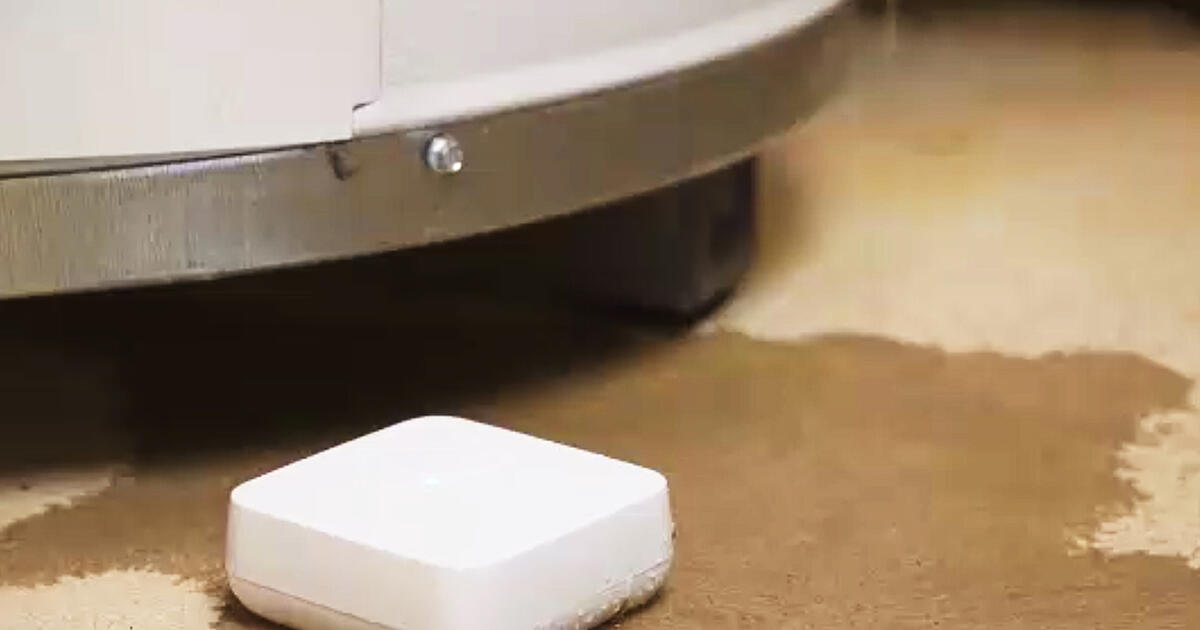Condo board goes in for early detection of water leaks with Alert Labs sensors.

www.habitatmag.com
Condo Board Goes in for Early Detection of Water Leaks
An Alert Labs sensor, known as a "Floodie," sends a warning signal as soon as it detects water.
Ask any
co-op or condo board member or their
property manager to name the biggest headache they get from their building, and the answer is guaranteed:
water leaks. Whether it comes through the building envelope or passes from one apartment to another (or many), water is Enemy No. 1. A condo board in Toronto — yes, in Canada — has hit upon a preventive measure that should be of interest to every co-op and condo board in New York City and beyond.
“I’m a gadget guy, and I’d been looking at
water sensors,” says
Paul Moreland, who has served as property manager for the past 14 years at
Thornwood II, a 13-story, 135-unit condominium in Midtown Toronto. “I stumbled onto a company called
Alert Labs that has these nice little two-inch cubes of plastic. That’s the water sensor.”
After getting in touch with the Ontario-based company, Moreland made a presentation to the seven-member condo board in the spring of
2019, advising them that a system that detects leaks instantaneously could save big money on major repairs. A representative from Alert Labs attended the meeting, showing a video and performing a demonstration that revealed how the system works. If water touches a sensor, it immediately sends a signal to one of the
cellular transmitters located throughout the building, which then sends a signal to Alert Labs. In less than a minute, the front desk and the super get a flood alert, pinpointing the location of the leak — not only the apartment number but also the location of the sensor within the apartment.
The board was sold. It built a
$30,000 line item into its next operating budget and ordered
270 sensors — placing one under the washing machine and one under the dishwasher in each of the 135 units. Residents could buy additional sensors for
$120 apiece for kitchen water lines, bathrooms or anywhere they saw a potential for leaks.
“One of our major issues, and certainly the most costly from an
insurance standpoint, has been water leaks,” says
Peter Model, the board’s secretary. “When leaks occurred prior to having the sensors, the damage was considerable because it doesn’t take long for water to go where it wants to go. Now, as soon as moisture is detected, a message goes to the front desk. This has been a game changer.”
Moreland, the property manager, offers two recent anecdotes that prove Model’s point. “Around 9 o’clock this morning, we got an alert on the 12th floor,” Moreland says. “Nobody was home. We went up and found water under the washing machine.”
While the super shut off the water and mopped up the puddle in the
utility room, the security guard called the unit-owner, who happened to be down the street. “We were able to stop it and contain it on the porcelain floor,” Moreland says. “We checked the apartment underneath, and it was all dry.” The unit-owner told him she had been planning to replace her aged washing machine, and this near-disaster was all the impetus she needed.
In the other incident, an alert came in last week from an apartment on the fifth floor. After ascertaining that the apartment was unoccupied, the staff entered and found a puddle under the
toilet tank, where the unit-owner had placed an extra sensor. They turned off the water and videotaped the leak and cleaned it up. “Then I called the unit-owner,” Moreland recalls. “He was on the golf course in Florida, and he told us to have the plumber replace the
flex hose that had failed.”
Like the unit-owner on the fifth floor, Model, the board secretary, bought extra sensors for his apartment and placed one under both of his heat pumps and one in the bathroom. The $120 he paid for each sensor has bought peace of mind. “They’ve proven invaluable,” he says.
Adds Moreland: “It has saved us thousands of dollars. But as a property manager, it has saved me a lot of headaches.”
